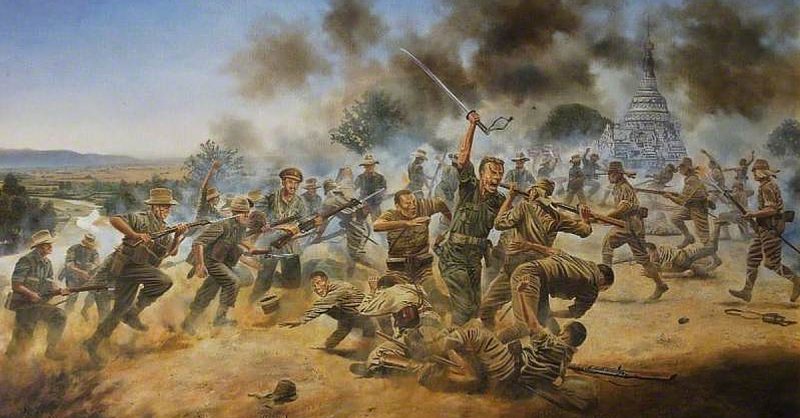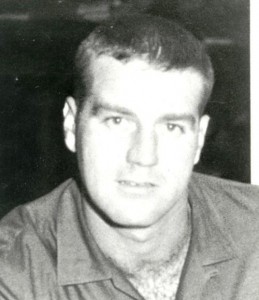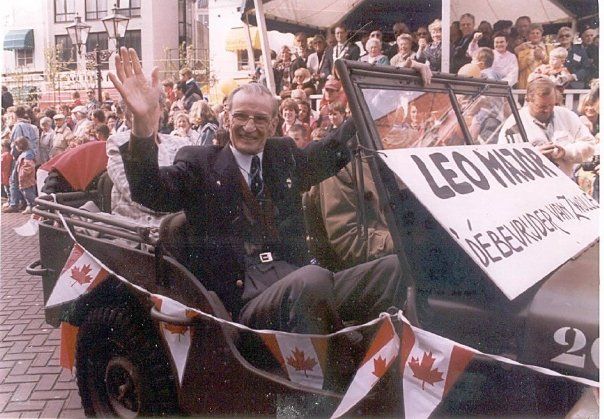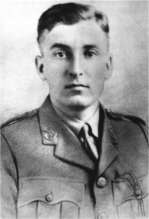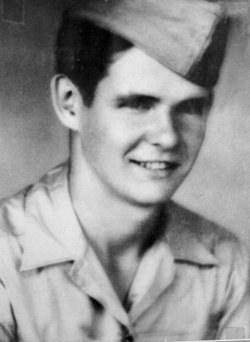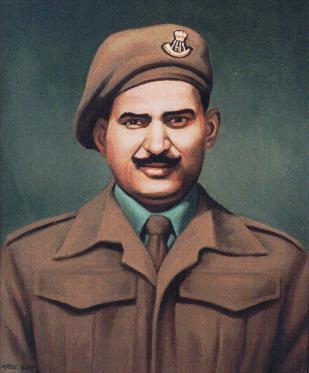The mood of war is one of frustration, chagrin, and uncertainty. Some choose to fight on to the bitter end, even snatching victory from seemingly hopeless situations.
Such was the case in these five epic one-man rampages in the history of war.
1. James Robinson Ain’t Scared of Fire
In 1966, Sgt. Robinson and his men were in an intense firefight with the Viet Cong. Even while bullets whizzed past him, Robinson moved through his men and gave them hope that they would make it out alive. As Robinson looked around, he noticed enemy snipers positioned in trees all around them, and they were inflicting heavy casualties.
Once Robinson saw which sniper was picking off most of his men, he retrieved an M79 40mm grenade launcher – it was nicknamed “Thumper” and “Bloop Tube “ – and he fired a grenade into the tree which killed the sniper.
He saw that a medic had been hit while administering aid to another wounded soldier, so he got out from behind cover and ran through a storm of enemy fire to reach them; he grabbed both men and dragged them back to safety, where he gave them first aid.
As the fighting raged on, Robinson would be running through the battlefield, picking up any ammo and weapons he could find, bringing them back to the able-bodied soldiers for re-distribution. When he wasn’t out collecting things he would be fighting and helping to eliminate this major threat.
Robinson once again saw a wounded man and he leaped out from his position to help him, making his way through enemy fire. While he made his way there, he was hit by enemy rounds in the leg and shoulder. Despite this, he grabbed and dragged his comrades to safety where he once again administered first aid to them and himself.
He then spotted an enemy machinegun that was inflicting heavy casualties. With all his rifle ammo gone he grabbed two grenades and began charging at the enemy.
He was hit again in his leg by an enemy tracer round which caught his clothes on fire. After ripping off the piece of clothing that was ablaze, he staggered towards the enemy which drew all the enemy fire from his men; he was now in grenade throwing range.
After he sustained two more chest wounds he finally threw his grenades and took out the enemy position, he then fell and died where he fell. He was awarded the Medal of Honor posthumously.
2. Sergeant Léo Major – Liberated a Dutch Town By Himself
During World War II, the Régiment de la Chaudière was nearing the city of Zwolle, which was held by a large German force. The commanding officer asked for two men to go recon the city before their artillery began firing.
Two men by the names of Willie Arseneault and Leo Major stepped forward and accepted the task at hand. So the city could be spared, they decided to take the town on their own, though they were only to do reconnaissance and try and link up with the Dutch Resistance.
Around midnight that night Arseneault was gunned down by the Germans after accidently giving his position away, enraged by this Leo killed two of the Germans but the rest fled in a vehicle. He would continue his mission alone; he made his way into Zwolle near Sassenport and noticed a staff car.
He grabbed the driver from the car and pulled him into the bar where a German officer was having a drink. He took the officer’s gun and learned he could speak French, so Leo told him that at 6:00 A.M. the Canadian artillery would be raining down on them, it would cause casualties to both Germans and civilians. He handed the officer his gun back in a sign of good faith and left the bar.
Leo began running through the streets, lobbing grenades, firing his gun and just making so much noise that the Germans began to believe the entire Canadian army was flooding into the city. Even while doing this he managed to capture German soldiers; he would then take them to the French-Canadian troops that were waiting just outside the town.
Once he was done transferring the troops he would run back into town and continue his assault. When he eventually got tired he would break into a home to rest; he did this four times.
Eventually, he discovered the Gestapo HQ and torched it; he later stumbled across the SS HQ, where he had to fight for his life against eight ranking Nazis. He finally killed four of them, but the other four escaped. He then noticed that two of the SS that he had killed were dressed as resistance fighters.
At 4:30 A.M, Leo found out that he had actually caused the Germans to retreat, he alone had liberated Zwolle, and his mission to contact the resistance was also completed. The city of Zwolle was now free of German occupation.
He was later told that the Germans had fled to the river and even more importantly, the shelling of the city would not happen, and his comrades would enter the city unmolested. Major went back and took Arseneault back to the Van Gerner farm until the regimental reinforcements would retrieve him.
Leo returned to camp at 9:00 A.M., and for his brave and selfless action, he was given the Distinguished Conduct Medal.
3. George Cairns Single-Handedly Captured a Hill
George Cairns was a lieutenant in The Somerset Light Infantry (Prince Albert’s), British Army, attached to the South Staffordshire Regiment in Burma during World War II. The South Staffordshire Regiment was a Chindit battalion, part of 77th Indian Infantry Brigade under the command of Brigadier Michael Calvert.
On March 16, 1944, The South Staffords began to dig in near the block at Henu and Mawlu, known as the White City; it would be one of the most important places of the Chindit Operation. On a nearby hill stood a Pagoda, it had not been taken by either the British or Japanese.
The morning after is when a Japanese force was discovered in the area. It seems as though the South Staffords had mistakenly taken up positions adjacent to a small Japanese force. It was at 11 A.M. when the hill exploded in a volley of gunfire.
It was Michael Calvert who wrote about that attack. “On the top of Pagoda Hill, not much bigger than two tennis courts, an amazing scene developed. The small white Pagoda was in the centre of the hill. Between that and the slopes which came up was a mêlée of South Staffords and Japanese bayonetting, fighting with each other, with some Japanese just throwing grenades from the flanks into the mêlée.”
Calvert added, “there, at the top of the hill, about fifty yards square, an extraordinary mêlée took place, everyone shooting, bayoneting, kicking at everyone else, rather like an officers’ guest night.”
Calvert also wrote: “In front, I saw that Lieut. Cairns had his arm hacked off by a Japanese, whom he shot. He picked up the sword and carried on. Finally, we drove them back behind the Pagoda.” Cairns wounded several Japanese soldiers before he finally succumbed to his injuries and died the following day.
Another commander named Norman Durant; was also in the thick of it, he described it in a letter to his family:
“The first thing I saw on reaching the path was horrible hand-to-hand struggle going on further up the hill. George Cairns and a Japanese were struggling and choking on the ground, and as I picked up a Japanese rifle and climbed up towards them I saw George break free and, picking up a rifle bayonet, stab the Japanese again and again like a madman.
It was only when I got near that I saw he himself had already been bayoneted twice through the side and that his left arm was hanging on by a few strips of muscle. How he had found the strength to fight was a miracle, but the effort had been too much and he died the next morning.”
After a brief “intermission,” the Calvert’s forces broke the Japanese resistance, driving them from the area. The fighting had been not unlike that depicted in scenes from ancient battles in the closeness of the hand-to-hand grappling before the Japanese finally broke. In spite of our casualties, we had all that elation of the winners of a good battle; especially of a bayonet charge…I spoke to Lieut. Cairns before he died.
‘Have we won sir? Was it all right? Did we do our stuff? Don’t worry about me.’ Five years later His Majesty graciously awarded Lieut. Cairns the Victoria Cross…
We counted forty-two Japanese dead, including four officers. More were shot and killed or wounded by our machine guns as they struggled across the open paddy, with the Japanese giving them some covering fire from Mawlu, 800 yards across the paddy on to Pagoda Hill.
Private N. Coales wrote of Cairn: “He died a hero.”
4. Joseph F. Merrell – On a rampage
Joseph F. Merrell pushed forward alone against a superior enemy near Lohe, Germany. His unit was attempting to quickly overtake some hills which would open a route to Nuremberg before the Germans had time to fortify their defenses. Unfortunately, they were pinned down by riflemen and two heavy machine guns.
Merrell got the great idea to charge at the enemy alone. He grabbed his rifle and began running through enemy fire, barely dodging the sweet grip of death, when he was finally at point blank range he fired at four Germans, killing them. Once he started forward again, his rifle got destroyed by a sniper bullet, though this did not stop him, with only three grenades he carried on.
He began zigzagging through all the bullets being fired before he arrived at the first machinegun nest, he hurled the grenades in and went in after the explosion, grabbing a Luger he killed any Germans that still lived.
Now that he had rearmed himself he set out again, making his way towards the next machinegun nest. On his way there he killed four more Germans that were in camouflaged foxholes, though he received a gunshot to his gut. Even after that, he carried on, with bullets tearing through his clothes and ricocheting off his helmet, he lobbed his last grenade into the nest before diving in and killing the rest of the crew. He had finally completed his mission, though in an instant he was killed by a machine pistol burst.
In his attack, he had taken out a total of 23 Germans and saved his unit from the slaughter that most likely would have befallen them. He went in with total selflessness, no fear and braver like no one else, he was a true hero. He was given the Medal of Honor posthumously.
5. Sergeant Major Havildar Singh
Singh was born on May 20, 1918, in India and was enrolled into the 6 Rajputana Rifles on May 20, 1936. In the Indo-Pakistani war, Pakistani raiders began a counter offensive in the Tithwal sector. It was the enemy that pushed the Indian army out of their forward positions across the Kishanganga River. After they were pushed back, the Indian forces sent up on the Tithwal ridge.
The 6 Rajputana Rifles were moved from Uri to Tithwal so they could strengthen the 163 Bde in the upcoming offensive. The offensive began on July 11, 1948, and lasted for four days. After they had got the reconnaissance report, they learned that the enemy had captured two vital positions and if they were to proceed the Indians would have to re-capture them.
It was the 6 Rajputana Rifles that were assigned to re-capture them. The C Company was to capture the second target while D Company went after the first. D company launched their offensive on July 18, at approximately 01h30 hours. Their route was one meter wide with deep ravines on either side. Above them were the hidden enemy bunkers.
The company came under heavy fire and within 30 minutes had already sustained heavy losses, 51 of their brothers had died. Piru Singh was at the front of the company while this was happening; most of the leading section had been killed. He gathered his strength and courage and began rushing forward, he had spotted the enemy medium machine gun post that was mowing down his men, and he was going to put an end to it.
While enemy grenades exploded around him, tearing off his clothes and wounding him, he pressed forward, nothing would stop him now. As he advanced you could hear him shouting out a battle cry, “Raja Ram Chandra Ki Jai” or “Victory to Raja Ram Chandra.”
He entered the nest and began bayoneting all the enemy soldiers before he took over the gun. At this point, all his comrades were either dead or wounded.
With the responsibility of cleaning the rest of the nests on him, he gathered himself and began inching towards the next one, as he drew near a grenade exploded and injured his face. He was now bleeding profusely and was almost blinded and all his ammo was spent.
He threw a grenade at the third trench before jumping into the second and killing two enemies, he then began to make his way to the third before he was shot in the head. Piru Singh was seen falling to the ground before an explosion happened in the third trench. Unfortunately his gunshot wound was fatal and Singh lay dead, though he completed his mission.
Major Piru Singh was given so much praise and was honored with the highest wartime gallantry medal posthumously, the Param Vir Chakra.
